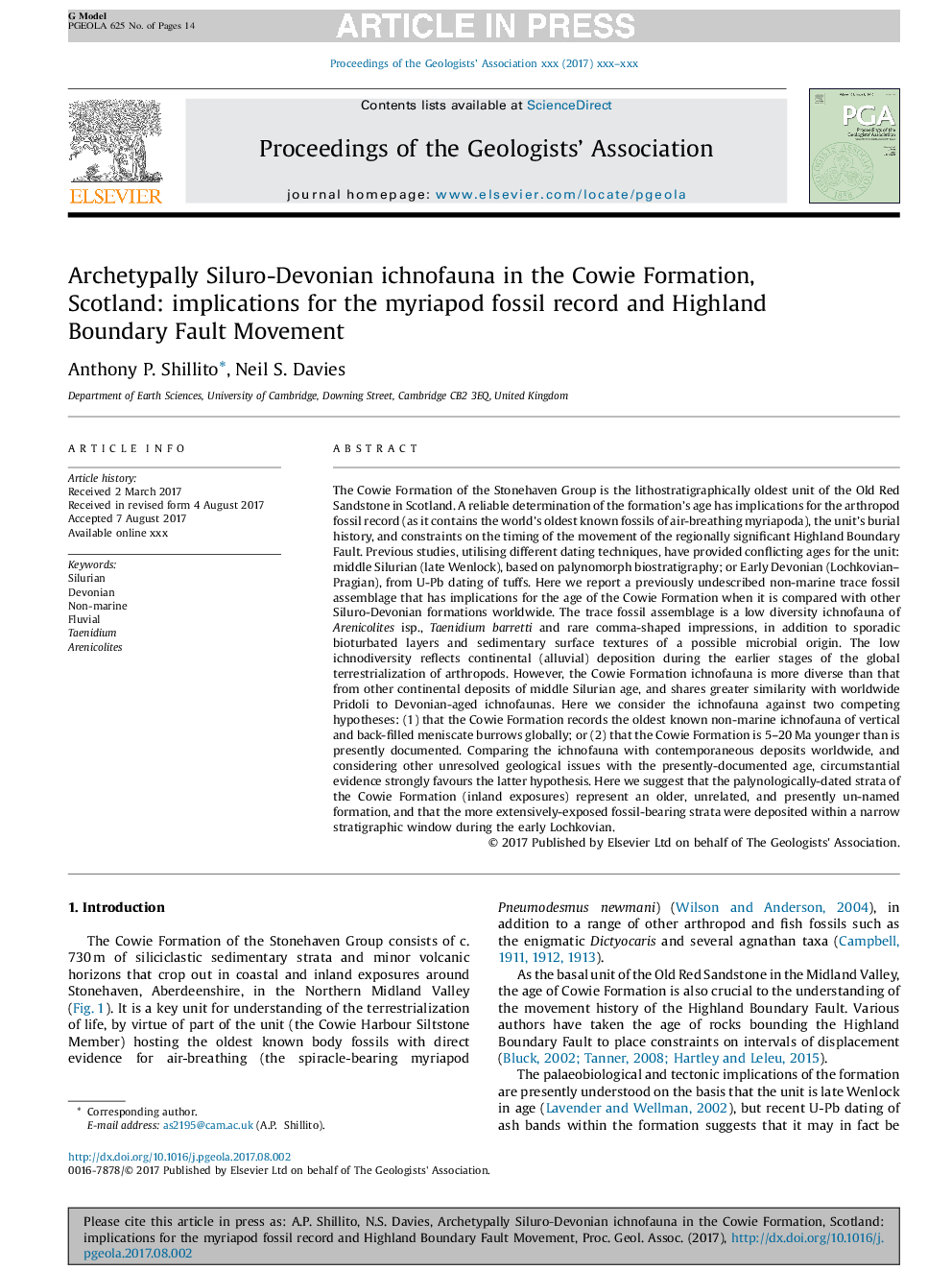| کد مقاله | کد نشریه | سال انتشار | مقاله انگلیسی | نسخه تمام متن |
|---|---|---|---|---|
| 8914627 | 1640635 | 2017 | 14 صفحه PDF | دانلود رایگان |
عنوان انگلیسی مقاله ISI
Archetypally Siluro-Devonian ichnofauna in the Cowie Formation, Scotland: implications for the myriapod fossil record and Highland Boundary Fault Movement
دانلود مقاله + سفارش ترجمه
دانلود مقاله ISI انگلیسی
رایگان برای ایرانیان
موضوعات مرتبط
مهندسی و علوم پایه
علوم زمین و سیارات
زمین شناسی
پیش نمایش صفحه اول مقاله

چکیده انگلیسی
The Cowie Formation of the Stonehaven Group is the lithostratigraphically oldest unit of the Old Red Sandstone in Scotland. A reliable determination of the formation's age has implications for the arthropod fossil record (as it contains the world's oldest known fossils of air-breathing myriapoda), the unit's burial history, and constraints on the timing of the movement of the regionally significant Highland Boundary Fault. Previous studies, utilising different dating techniques, have provided conflicting ages for the unit: middle Silurian (late Wenlock), based on palynomorph biostratigraphy; or Early Devonian (Lochkovian-Pragian), from U-Pb dating of tuffs. Here we report a previously undescribed non-marine trace fossil assemblage that has implications for the age of the Cowie Formation when it is compared with other Siluro-Devonian formations worldwide. The trace fossil assemblage is a low diversity ichnofauna of Arenicolites isp., Taenidium barretti and rare comma-shaped impressions, in addition to sporadic bioturbated layers and sedimentary surface textures of a possible microbial origin. The low ichnodiversity reflects continental (alluvial) deposition during the earlier stages of the global terrestrialization of arthropods. However, the Cowie Formation ichnofauna is more diverse than that from other continental deposits of middle Silurian age, and shares greater similarity with worldwide Pridoli to Devonian-aged ichnofaunas. Here we consider the ichnofauna against two competing hypotheses: (1) that the Cowie Formation records the oldest known non-marine ichnofauna of vertical and back-filled meniscate burrows globally; or (2) that the Cowie Formation is 5-20Â Ma younger than is presently documented. Comparing the ichnofauna with contemporaneous deposits worldwide, and considering other unresolved geological issues with the presently-documented age, circumstantial evidence strongly favours the latter hypothesis. Here we suggest that the palynologically-dated strata of the Cowie Formation (inland exposures) represent an older, unrelated, and presently un-named formation, and that the more extensively-exposed fossil-bearing strata were deposited within a narrow stratigraphic window during the early Lochkovian.
ناشر
Database: Elsevier - ScienceDirect (ساینس دایرکت)
Journal: Proceedings of the Geologists' Association - Volume 128, Issues 5â6, October 2017, Pages 815-828
Journal: Proceedings of the Geologists' Association - Volume 128, Issues 5â6, October 2017, Pages 815-828
نویسندگان
Anthony P. Shillito, Neil S. Davies,